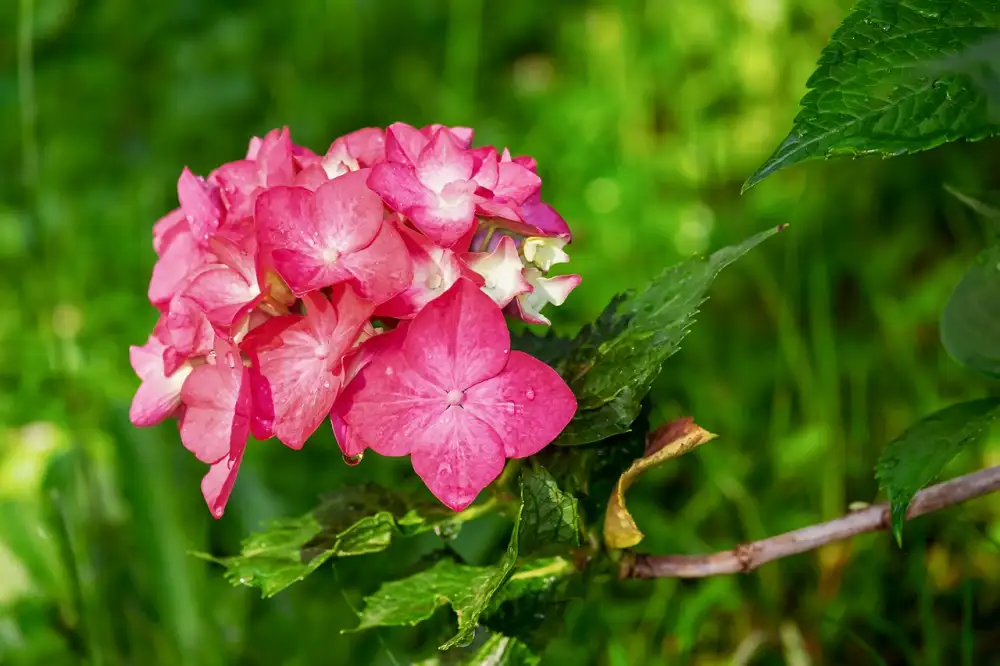Ultimate Hydrangea Care Guide: Tips for Thriving Blooms at Home

Hydrangeas are popular flowering plants known for their large, showy blooms that come in a variety of colors such as blue, pink, purple, and white. These versatile shrubs can thrive in different climates and soil conditions, making them a favorite among gardeners. With proper care and maintenance, hydrangeas can bloom from spring to fall, adding beauty and charm to any garden or landscape. Understanding the specific needs of hydrangeas is essential to ensure they flourish and produce stunning blooms year after year.
Selecting the Right Location
Selecting the right location is crucial for the health and growth of your hydrangeas. These plants thrive in well-draining soil with plenty of sunlight, preferably in the morning with some afternoon shade to protect them from scorching heat. Hydrangeas also prefer sheltered spots to shield them from strong winds, which can damage their delicate blooms. Be sure to choose a location that provides enough space for the hydrangea's roots to spread out and grow comfortably. By selecting an ideal location, you can ensure that your hydrangeas will flourish and produce beautiful blooms throughout the season.
Proper Watering Techniques
Proper watering is essential for the health and vitality of hydrangeas. These plants prefer consistently moist soil but are susceptible to root rot if overwatered. Water deeply once or twice a week, allowing the soil to dry slightly between waterings. Avoid wetting the foliage to prevent fungal diseases. During hot weather, hydrangeas may require more frequent watering. Mulching around the base of the plant can help retain moisture and regulate soil temperature.
Fertilizing Hydrangeas
Fertilizing hydrangeas is essential for promoting healthy growth and vibrant blooms. The type of fertilizer you choose will depend on the variety of hydrangea you have. For mophead and lacecap hydrangeas, a balanced fertilizer with equal parts nitrogen, phosphorus, and potassium (such as 10-10-10) is recommended in early spring. Smooth hydrangeas benefit from a slow-release fertilizer in late winter or early spring. Oakleaf and panicle hydrangeas thrive with a high-phosphorus fertilizer to encourage blooming. Remember to follow the instructions on the fertilizer package to avoid overfeeding, which can lead to excessive foliage growth at the expense of blooms.
Pruning Guidelines
Pruning hydrangeas is essential for maintaining their health and promoting optimal blooming. The timing of pruning depends on the type of hydrangea you have. For smooth hydrangeas (Hydrangea arborescens) and panicle hydrangeas (Hydrangea paniculata), it's best to prune in late winter or early spring before new growth emerges. On the other hand, for bigleaf hydrangeas (Hydrangea macrophylla) and oakleaf hydrangeas (Hydrangea quercifolia), it's recommended to prune right after they finish blooming in summer. When pruning, remove dead or weak stems at the base and thin out overcrowded branches to improve air circulation within the plant. Avoid cutting back more than one-third of the plant at a time to prevent stress and ensure healthy regrowth.
Dealing with Pests and Diseases
Hydrangeas are generally hardy plants, but they can still fall victim to pests and diseases. Common pests that may affect hydrangeas include aphids, spider mites, and scale insects. To combat these pests, you can use insecticidal soap or neem oil spray. Keep an eye out for signs of infestation such as distorted leaves or sticky residue on the plant.
As for diseases, hydrangeas are susceptible to powdery mildew, leaf spot, and bacterial wilt. To prevent these issues, make sure your hydrangeas have good air circulation by spacing them properly. Remove any infected leaves promptly and avoid overhead watering to prevent the spread of disease. Fungicides can also be used as a preventive measure against fungal diseases.
Regularly inspecting your hydrangeas for any signs of pests or diseases will help you catch problems early on and take appropriate action to protect your plants. By staying vigilant and addressing issues promptly, you can ensure that your hydrangeas stay healthy and vibrant throughout the growing season.
Winter Protection for Hydrangeas
Winter Protection for Hydrangeas is crucial to ensure their survival during the cold months. To protect your hydrangeas, consider applying a thick layer of mulch around the base of the plant to insulate the roots from freezing temperatures. Additionally, you can wrap burlap around the shrub to shield it from harsh winds and snow. Avoid pruning in late fall, as this can stimulate new growth that may be damaged by frost. By taking these precautions, you can help your hydrangeas thrive come springtime.
In conclusion, hydrangeas are beautiful and versatile plants that can thrive with proper care and attention. By selecting the right location with adequate sunlight and well-draining soil, providing consistent watering, fertilizing appropriately, pruning at the correct times, and monitoring for pests and diseases, you can enjoy vibrant blooms in your garden. Additionally, remember to protect your hydrangeas during the winter months to ensure their survival. To further enhance the health of your hydrangeas, consider mulching around the base of the plant, deadheading spent blooms, and using organic pest control methods when needed. With these tips in mind, you can create a stunning display of hydrangeas in your home garden.
Published: 04. 03. 2024
Category: Home



